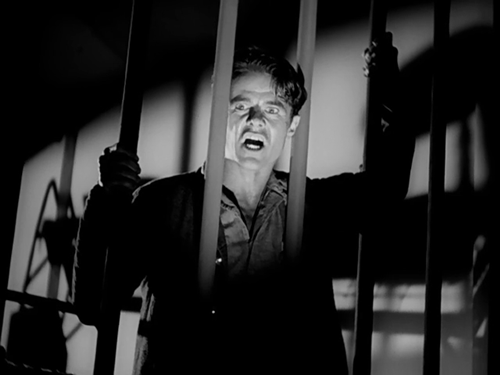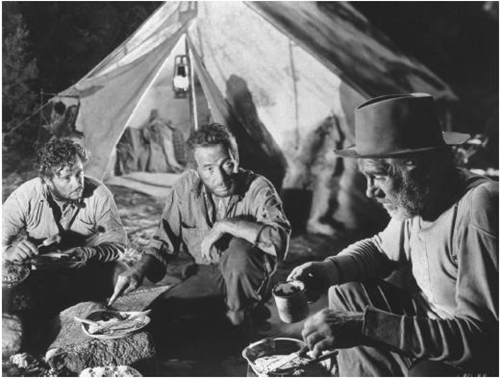By Michael Wilmington and Film Noir Blonde
The Noir File is FNB’s weekly guide to classic film noir, neo-noir and pre-noir on cable TV. All the movies below are from the current schedule of Turner Classic Movies (TCM), which broadcasts them uncut and uninterrupted. The times are Eastern Standard and (Pacific Standard).
CO-PICKS OF THE WEEK
“Breathless” (1960, Jean-Luc Godard). Thursday, Nov. 8, 6 p.m. (5 p.m.)
A guy named Michel Poiccard (Jean-Paul Belmondo) steals a car, drives from Marseilles to Paris, sings of a girl named Patricia (Jean Seberg), finds a gun and in the process reinvents film noir à la the New Wave.
That’s “Breathless,” the 1959 black-and-white Jean-Luc Godard French film that, like Orson Welles’ 1941 “Citizen Kane” – another masterpiece by a revolutionary cineaste still in his 20s – changed the ways we look at film. It changed also the way moviemakers shot movies and critics wrote about them, and perhaps a bit the ways we look at life too.
There’s a key difference though. Welles made us all believe that, if you could get all the tools of the movie industry at your disposal, you could tell stories so magical and deep, they’d open up a whole new world. Godard made us believe that, if you’d seen enough movies, you could grab a camera, walk out on the street, and just start shooting. You could make a movie not according to industry rules and protocols, but right out of your own life. (In French, with English subtitles.)
“Stranger on the Third Floor” (1940, Boris Ingster). Saturday, Nov. 3, 7:45 a.m. (4:45 a.m.)
In this knockout of a B-movie, a breezy newspaper reporter (John McGuire) and his plucky lady friend (Margaret Tallichet, later Mrs. William Wyler) descend into a mad, bad dream. The reporter testifies against a hapless patsy accused of murder (Elisha Cook Jr.), sees him convicted and then finds himself facing a murder charge of his own. Meanwhile, the real murderer may just be that strange little man with a long scarf (Peter Lorre) who prowls around the streets, looking sad and mad and dangerous, as only Peter Lorre can.
Directed by Latvian émigré Boris Ingster, “Stranger” is often cited as the first film noir. And indeed, it has a lot of the elements, all suddenly jelling: the dark city streets, the pathological characters, the wise-cracking reporters, the tough cops and the sense of impending doom. It has Nicholas Musuraca cinematography, Roy Webb music and, as a bonus, art direction by Van Nest Polglase (“Citizen Kane”). Most of all, it has one of the screen’s truly memorable nightmare sequences: an eerie delve into crime and punishment, full of wild angles, dark shadows and insane persecutions.
Sunday, Nov. 4
12 a.m. (9 p.m.) “Pandora’s Box” (1929, G. W. Pabst). One of the great German silent films and one of the great precursors of film noir: G. W. Pabst’s somber, relentless tale of the playgirl-turned-prostitute Lulu (the sublime Louise Brooks), whose stunning, black-banged beauty helps make her one of the most appealing and tragic of femme fatales. (Silent, with music and intertitles.)
Thursday, Nov. 8
9:45 a.m. (6:45 a.m.) “The Treasure of the Sierra Madre” (1948, John Huston).
Based on the classic novel by the mysterious B. Traven, a lacerating portrayal of greed, the movie is a classic as well. “Treasure” is perhaps the finest work by writer-director (and here, for the first time, actor), John Huston. It’s one of the great westerns, a supreme western noir, one of the best literary adaptations and one of the great Humphrey Bogart pictures.
Bogart is Fred C. Dobbs, a down and out American in 1925 in Tampico, Mexico, who hooks up with two other Yanks: tough but decent Bob Curtin (Tim Holt) and fast-talking, grizzled, expert prospector Howard (John’s father Walter Huston; he won the Oscar). The three treasure hunters strike gold in the Sierra Madre mountains, but they also hit a vein of darkness: the discord and violence that sudden riches can bring.
2 a.m. (11 p.m.): “Sunrise” (1927, F. W. Murnau). Murnau’s first film in Hollywood is a beautiful-looking cinematic ballad of a good wife (Oscar-winner Janet Gaynor), a bad woman (Margaret Livingston), a confused husband torn between them (George O’Brien) and the screen’s most poetic train journey from country to city. Selected in the last Sight and Sound film poll as one of the 10 greatest films of all time. It is. (Silent, with music and intertitles.)












From FNB readers